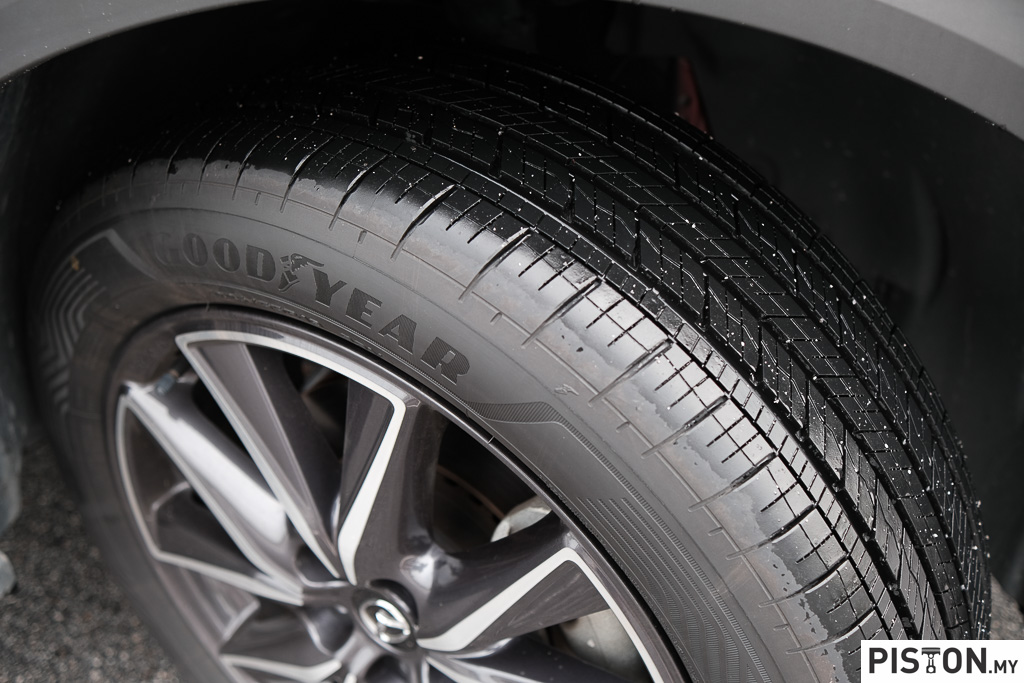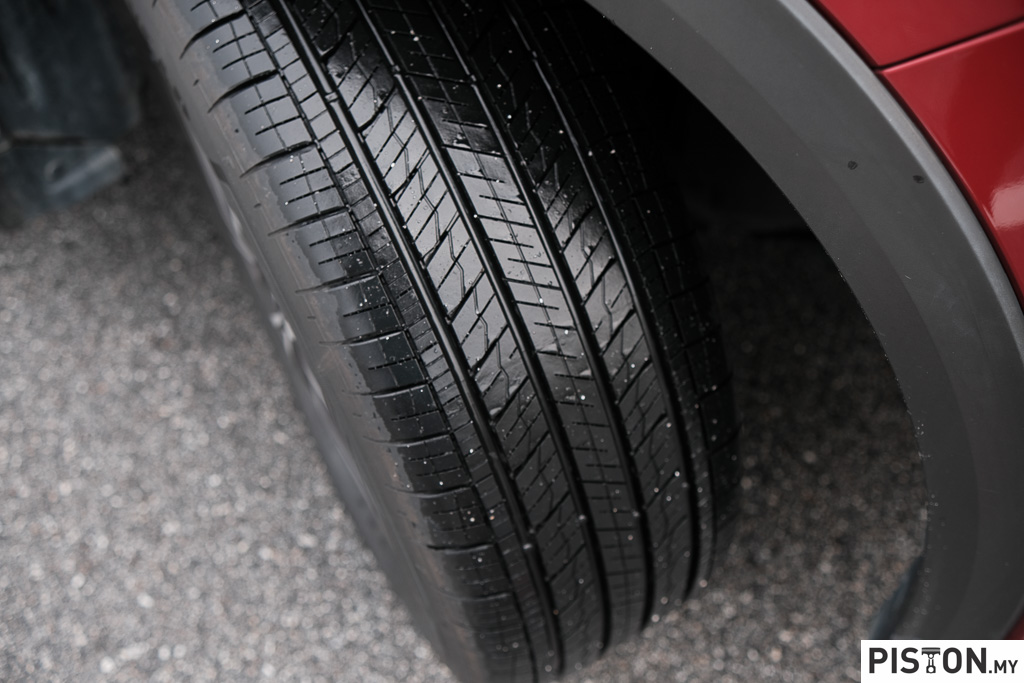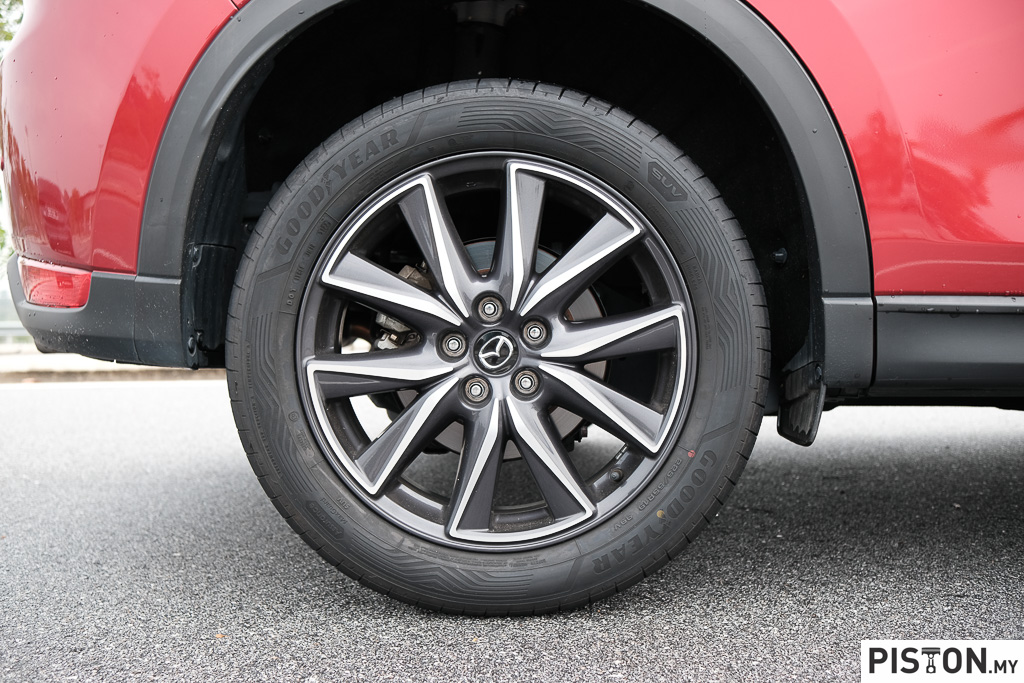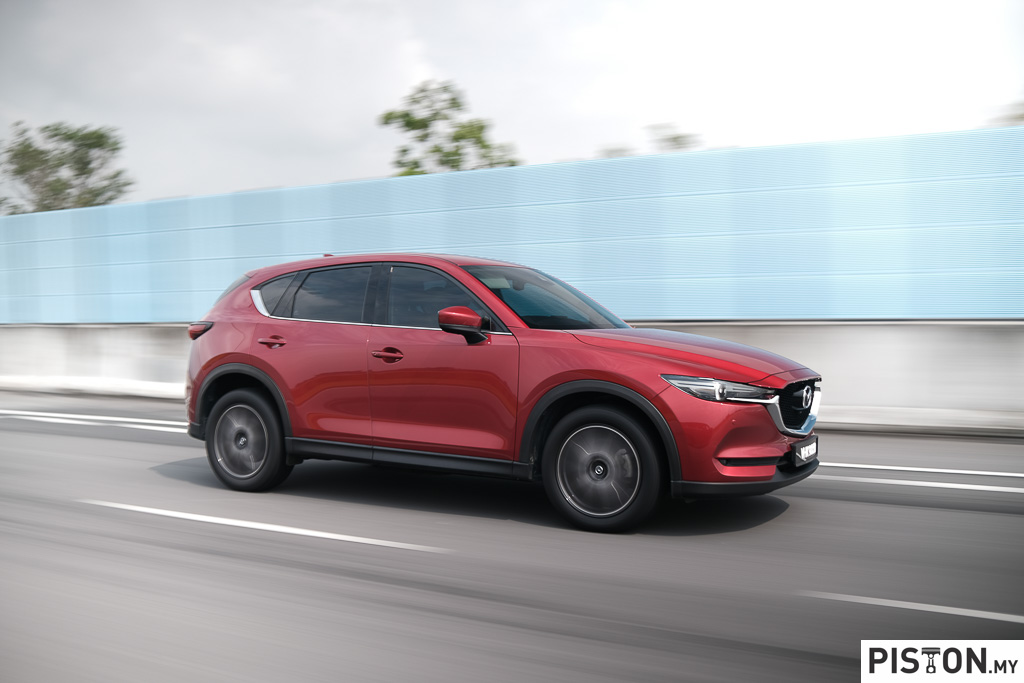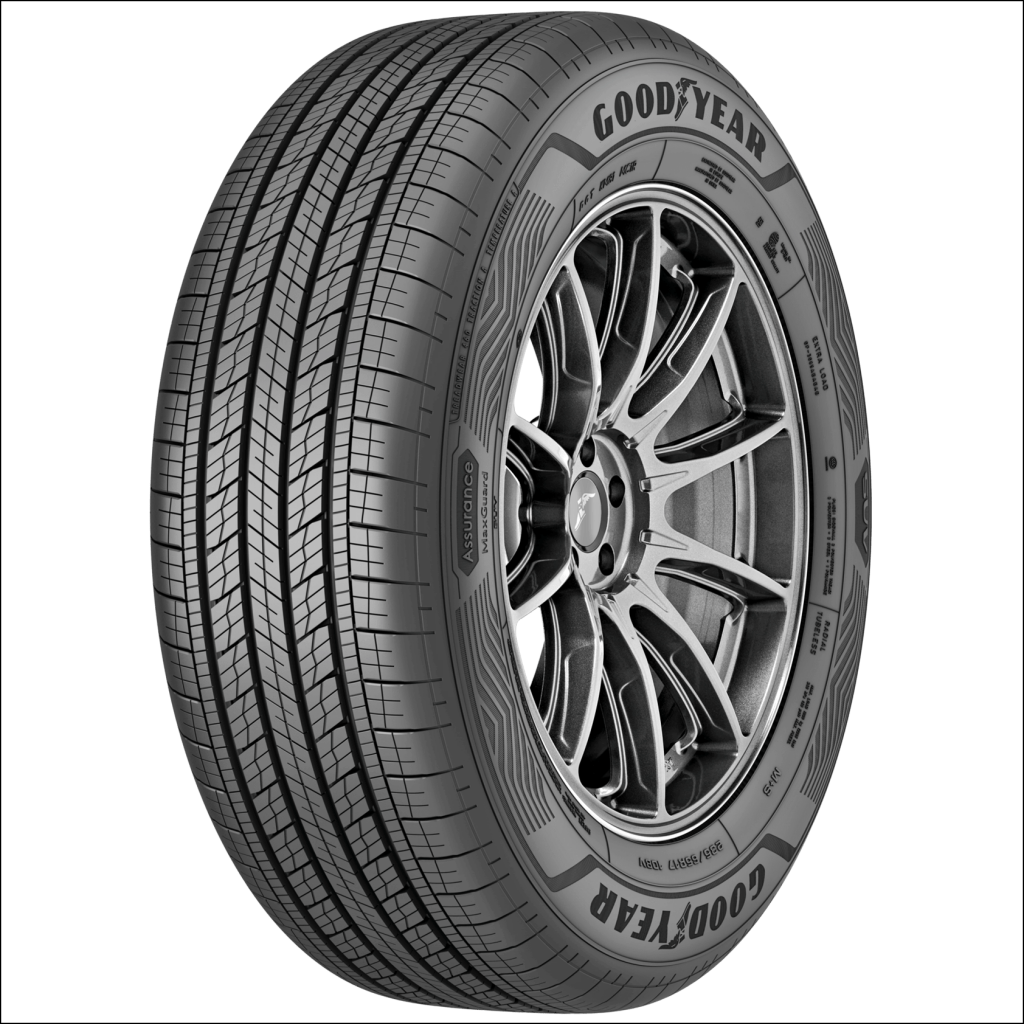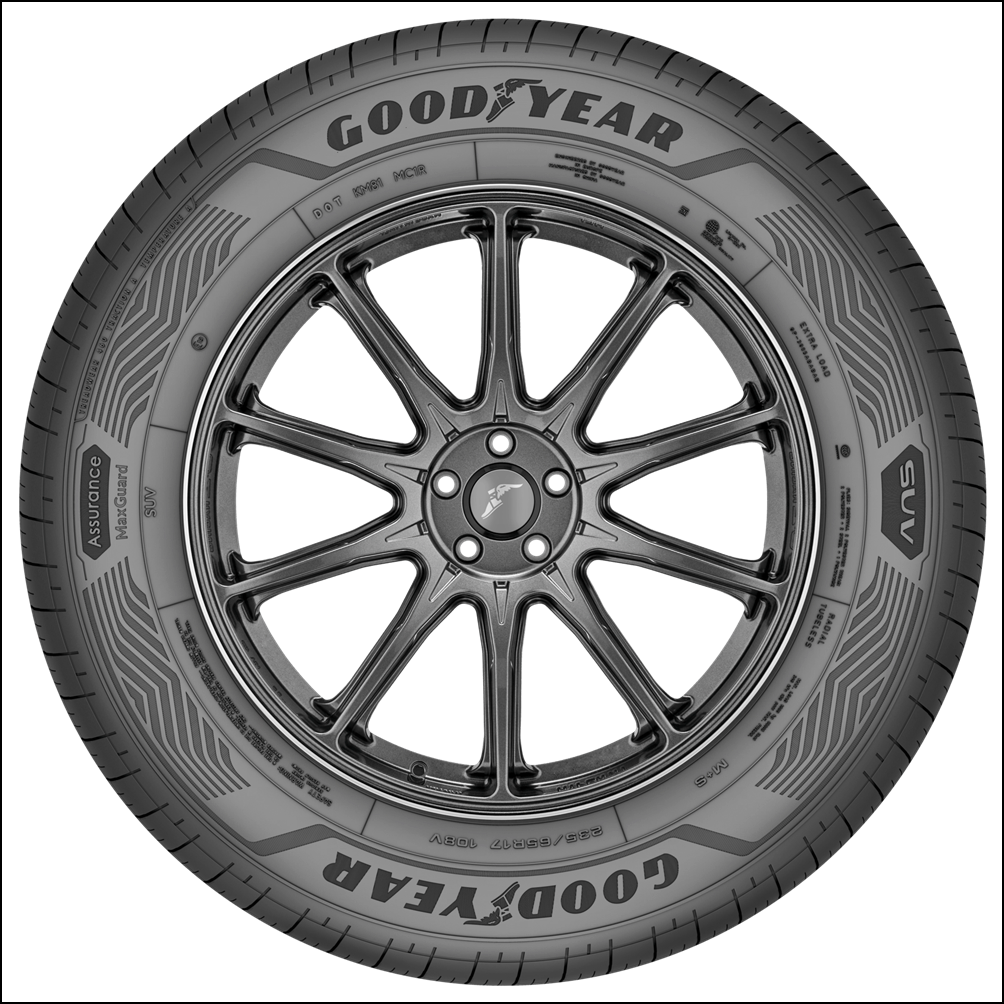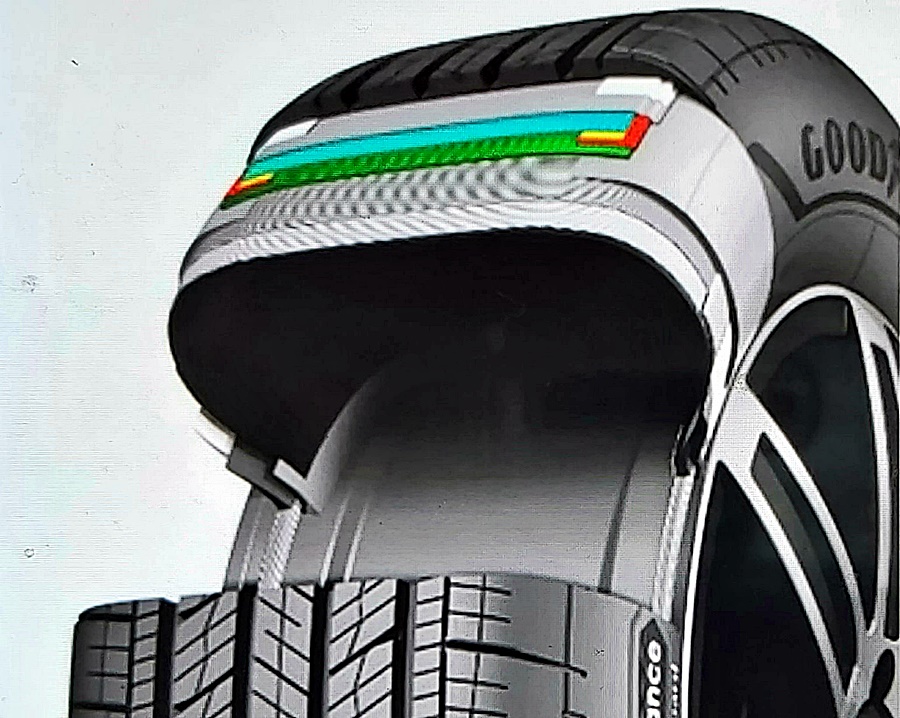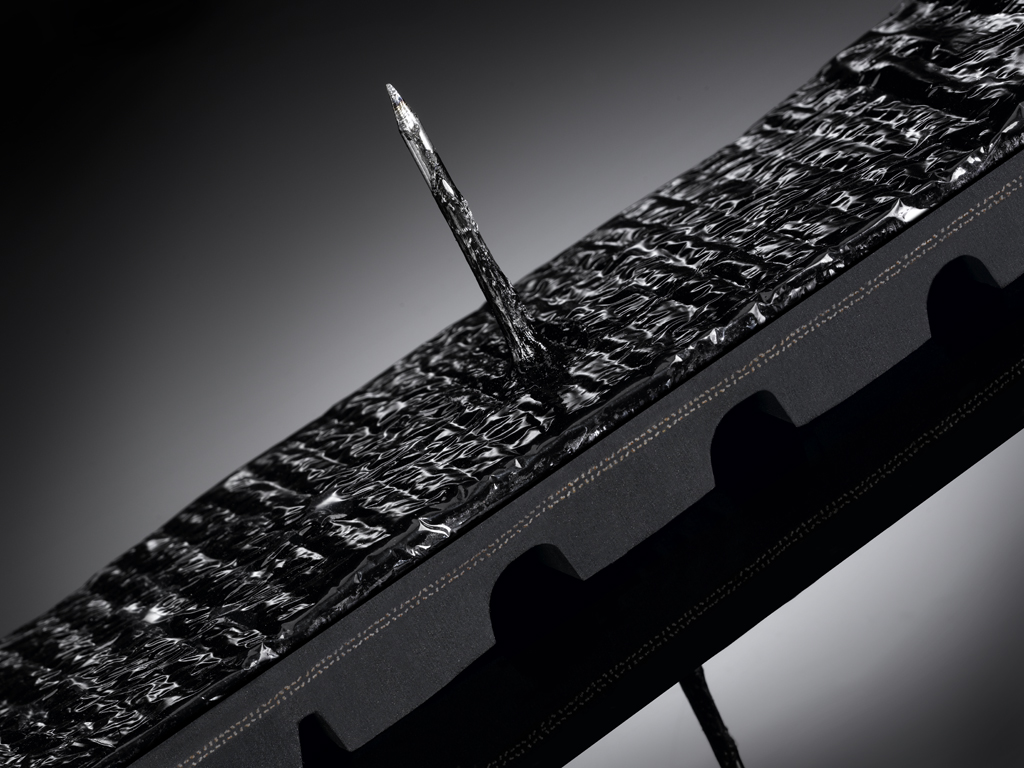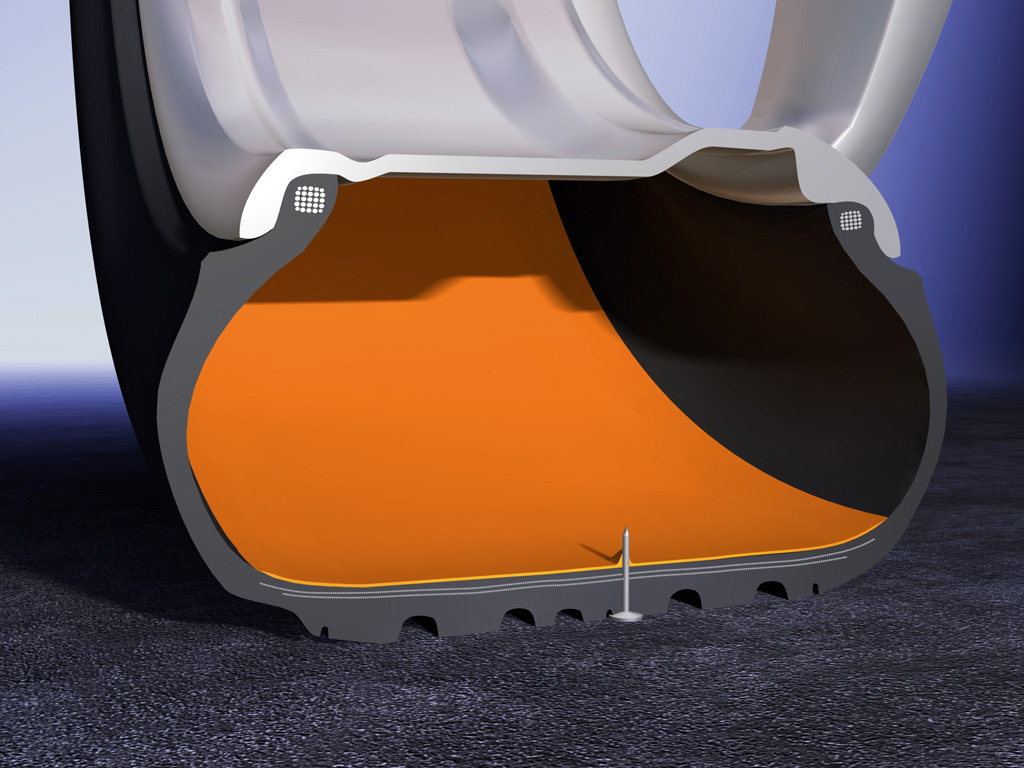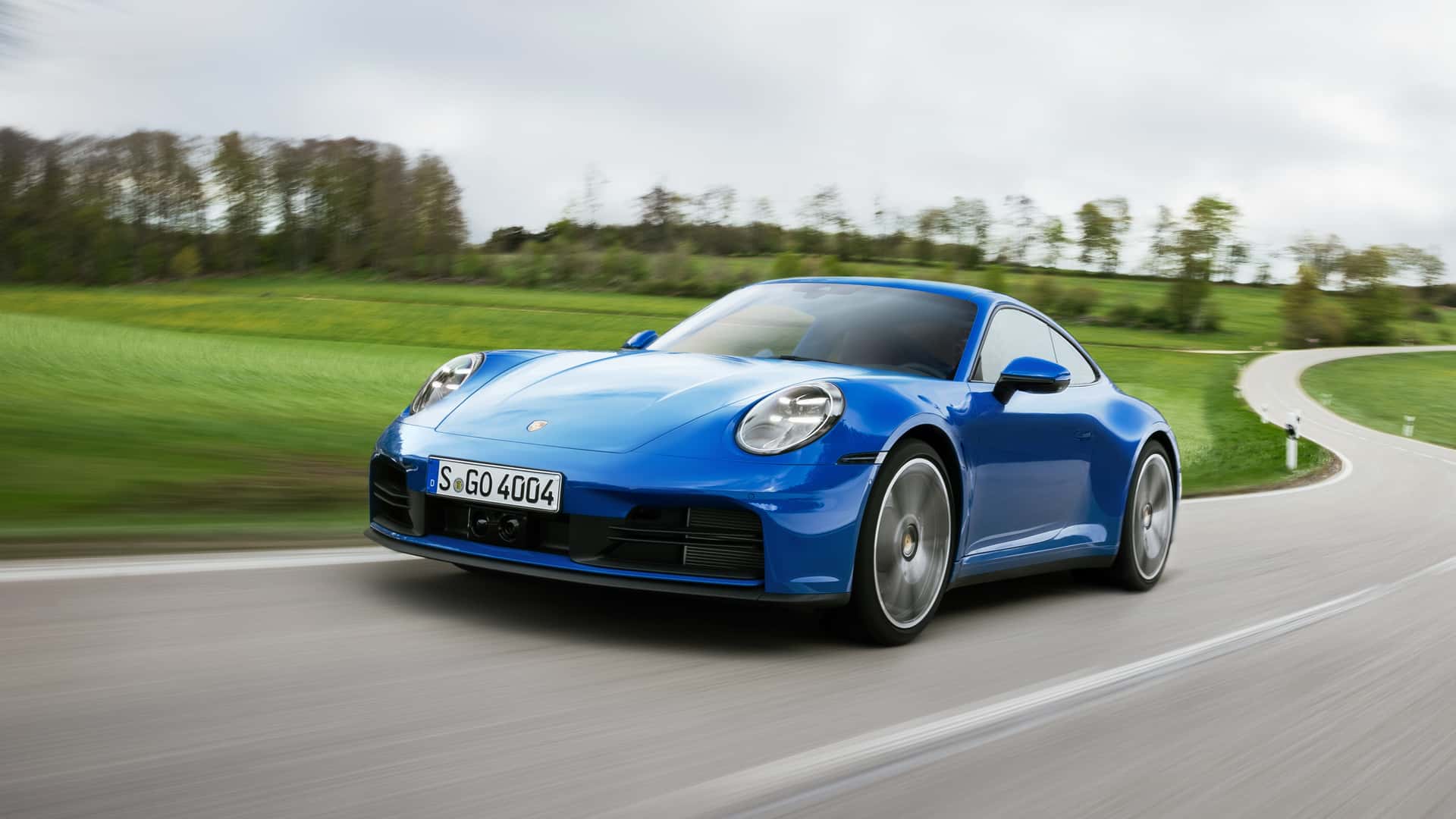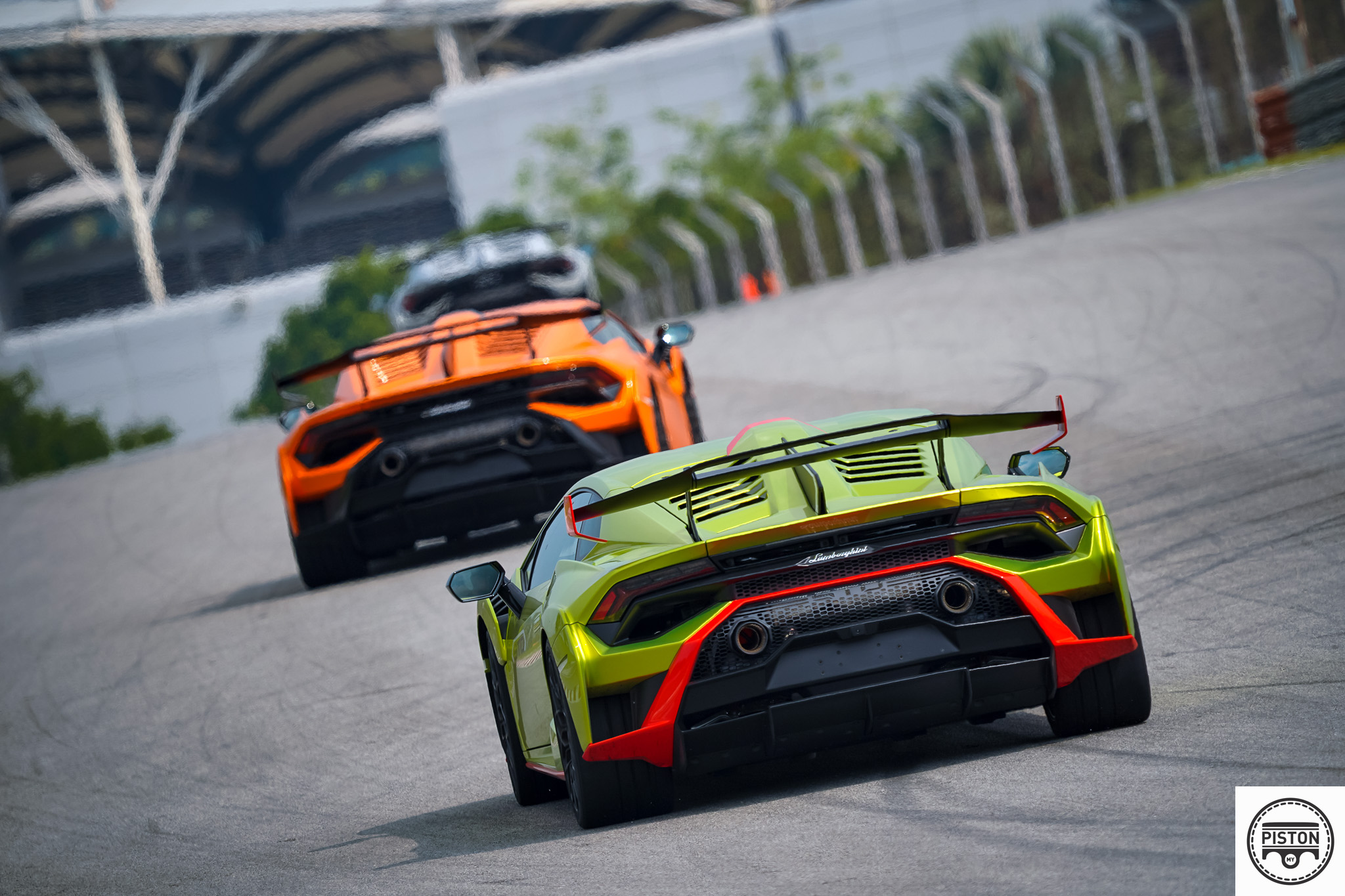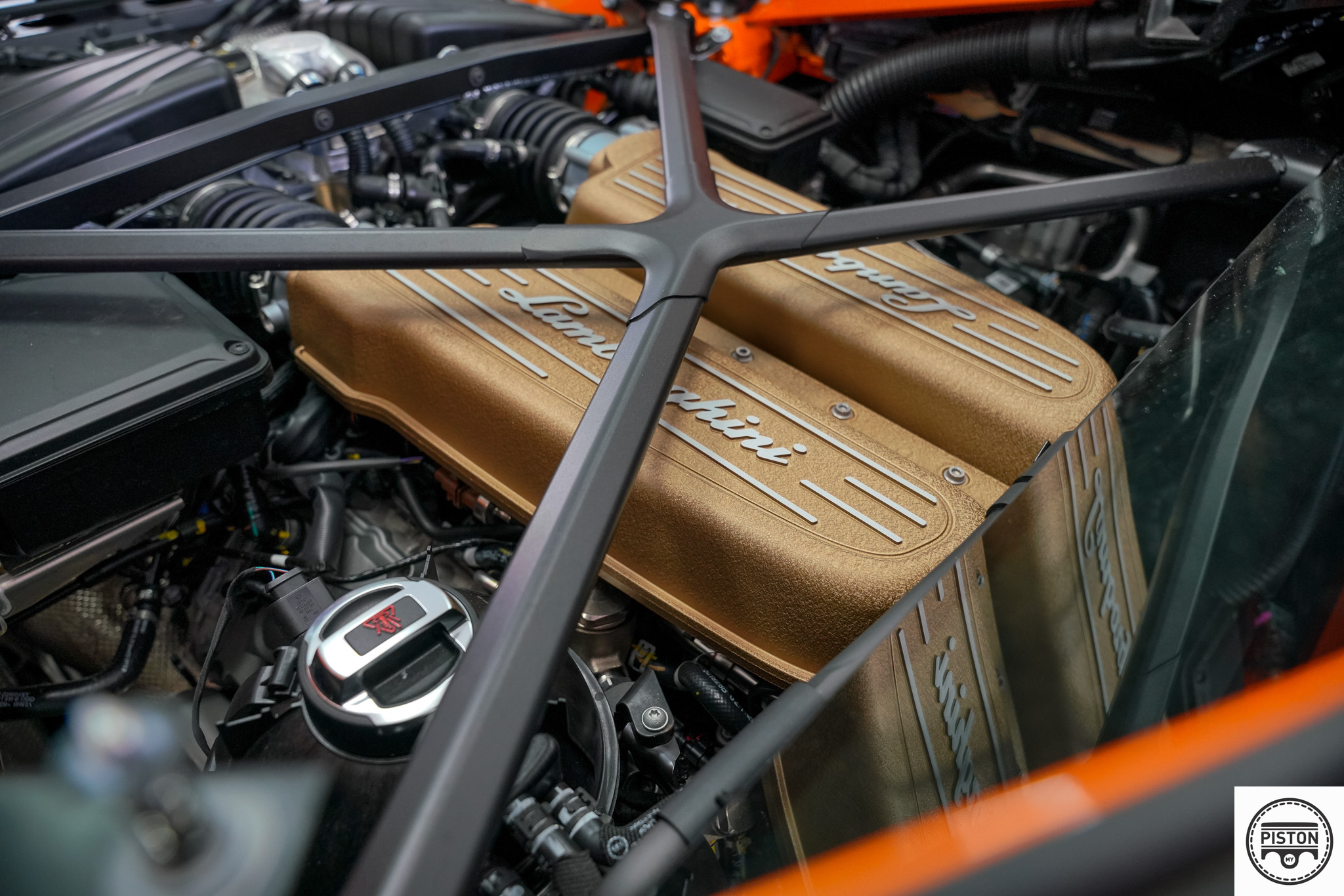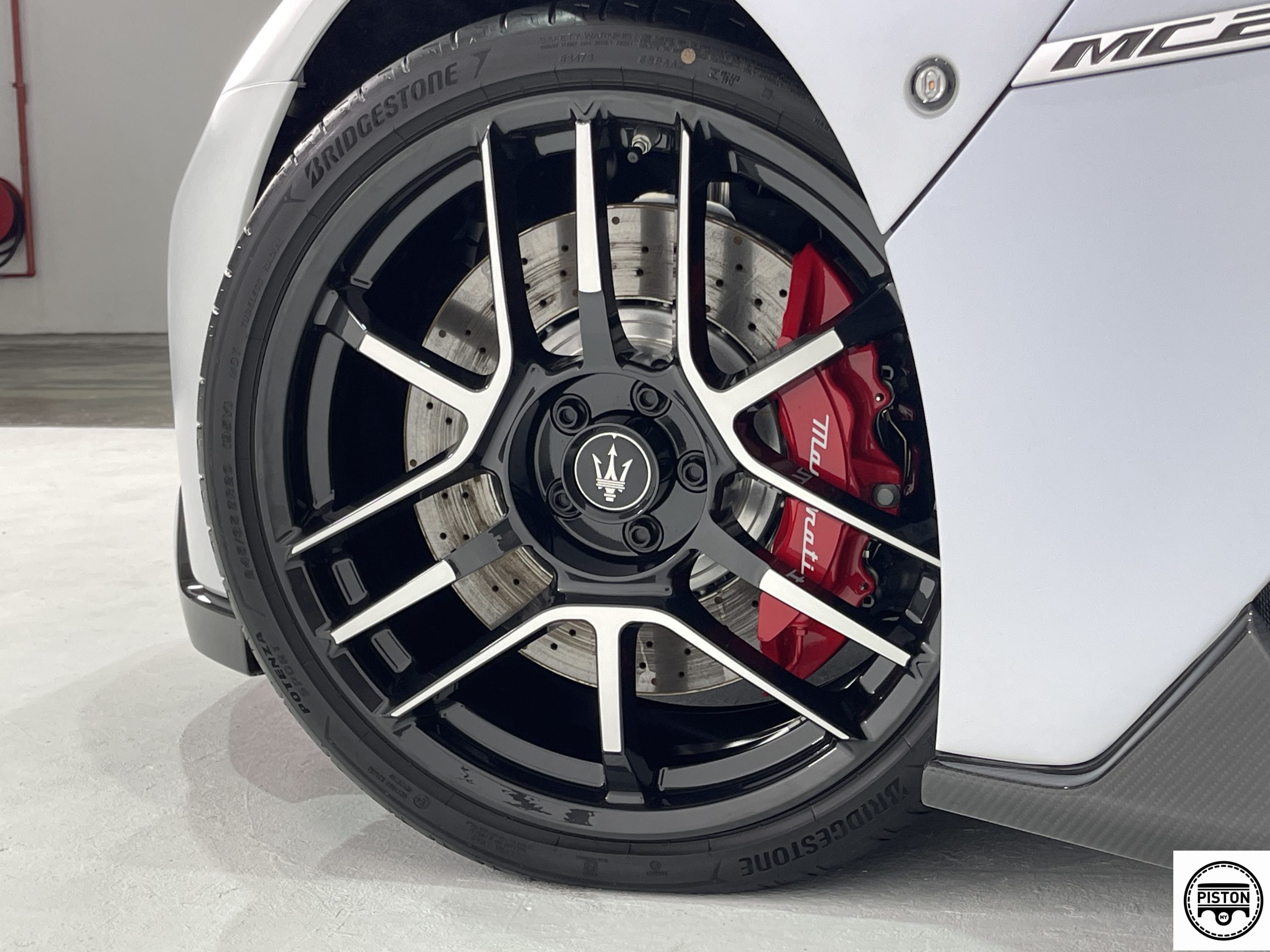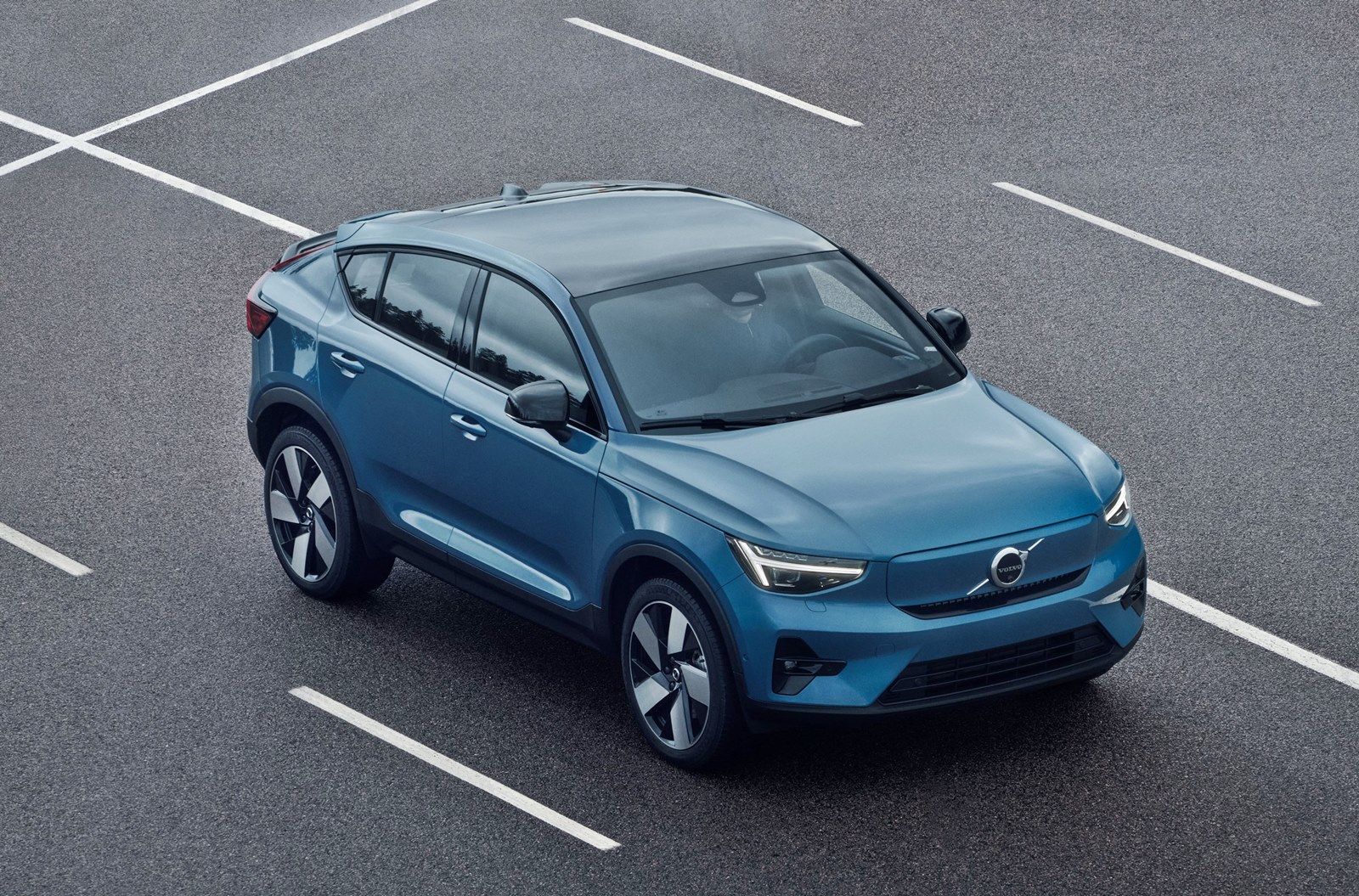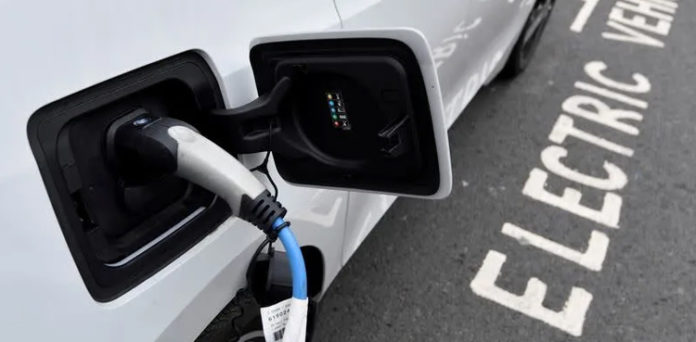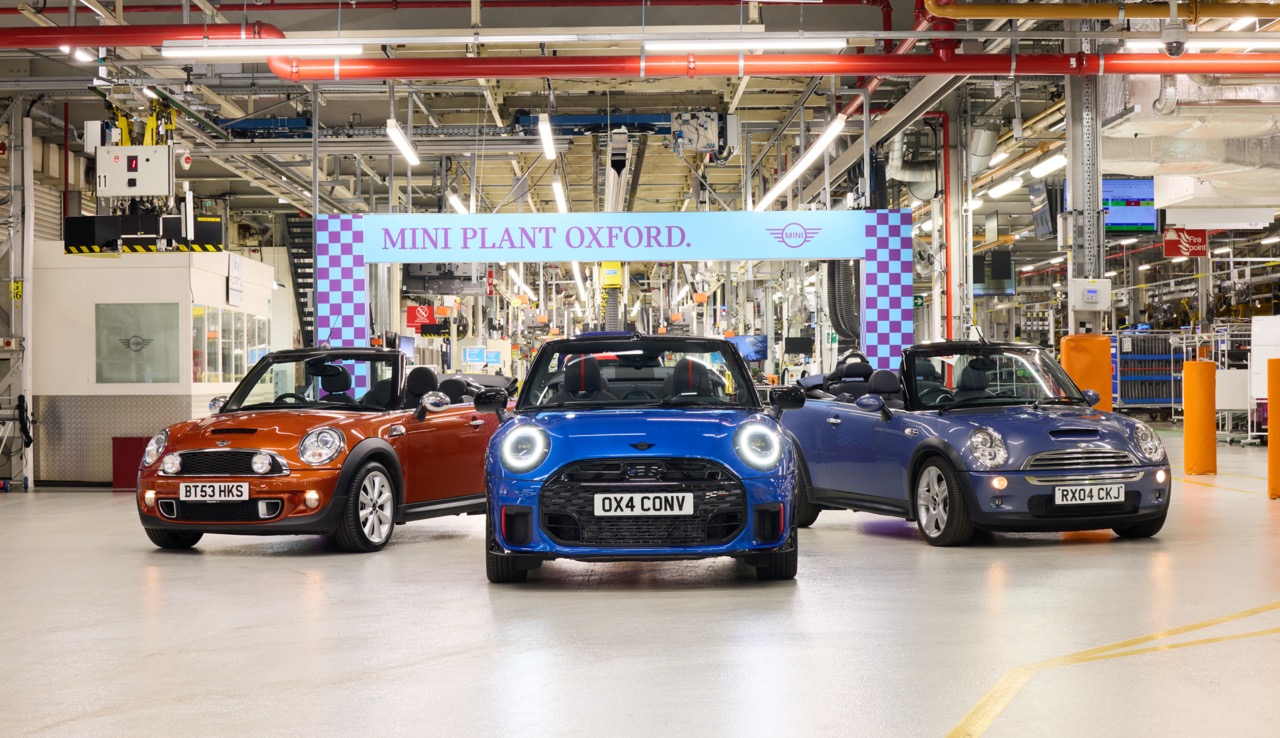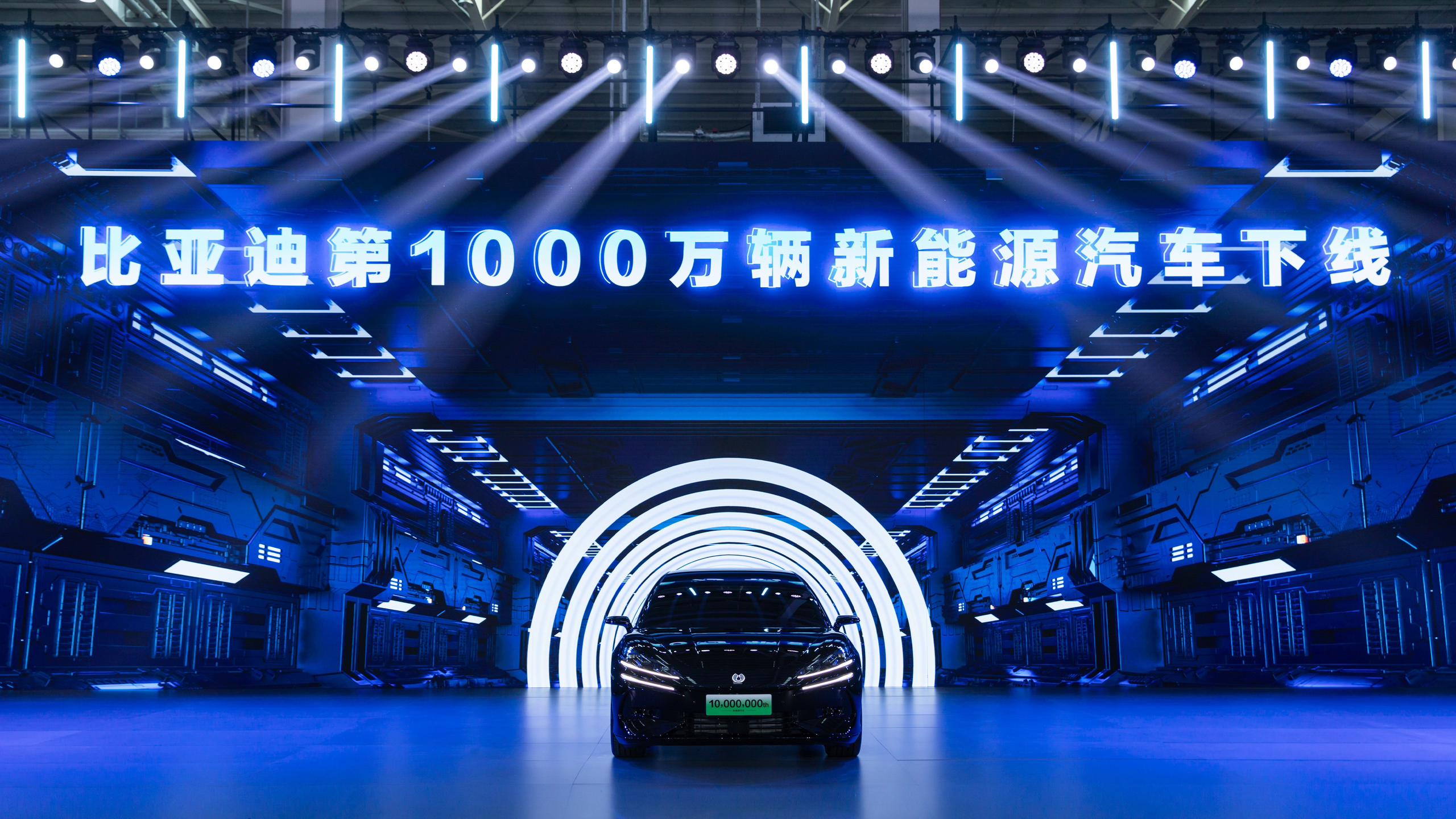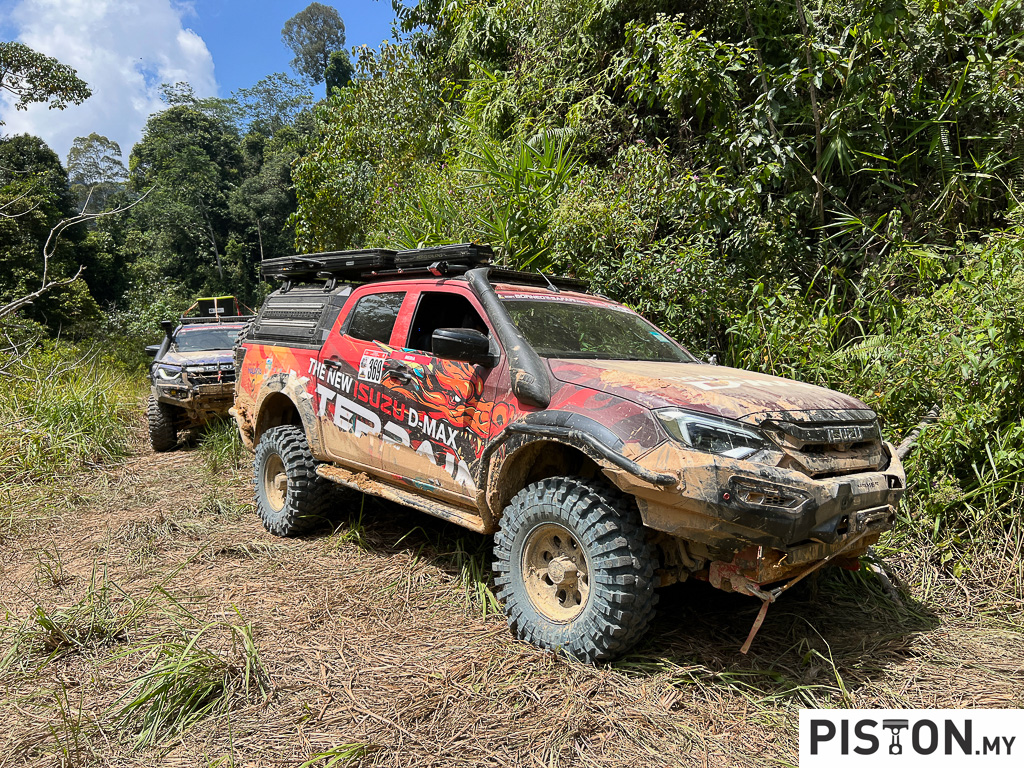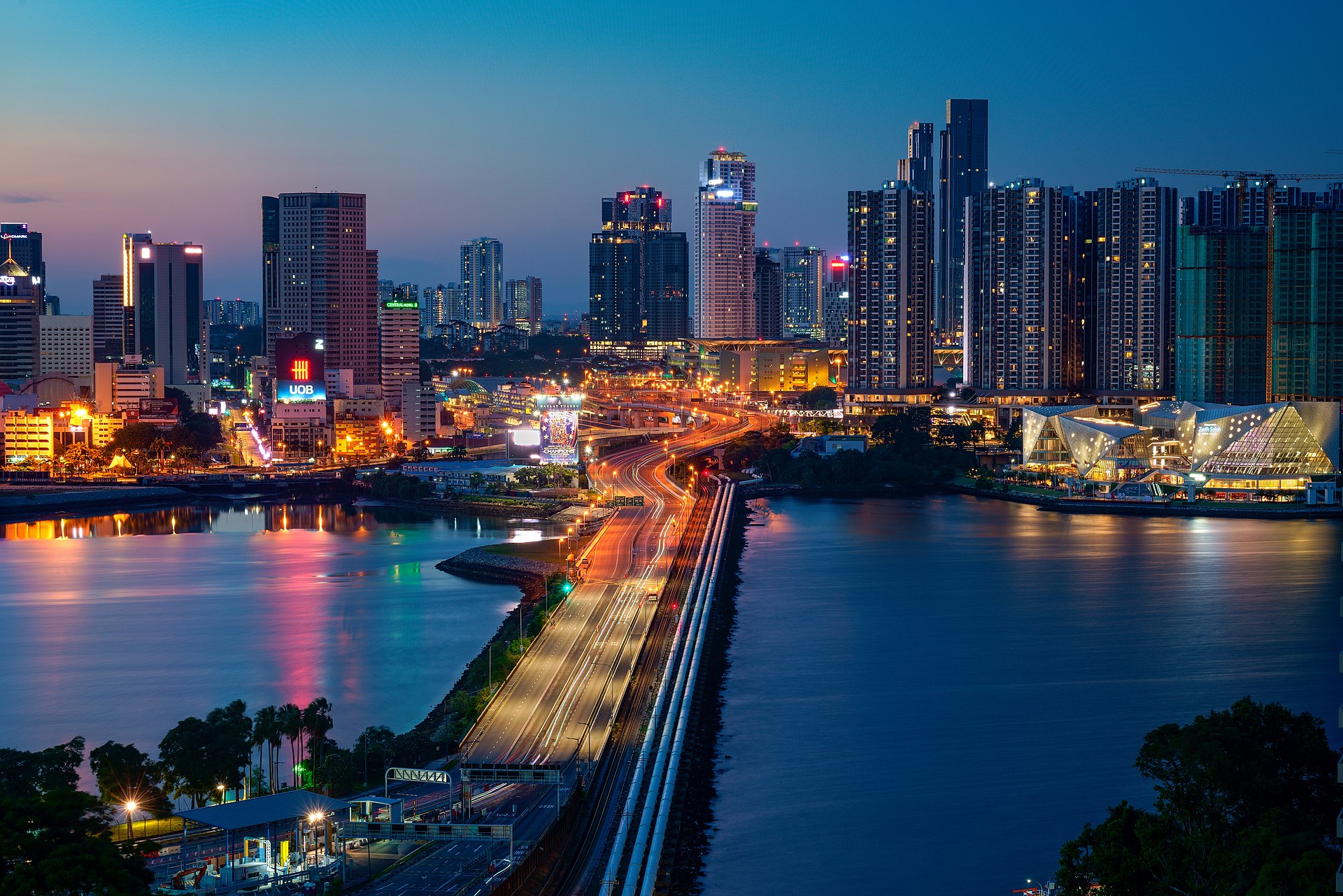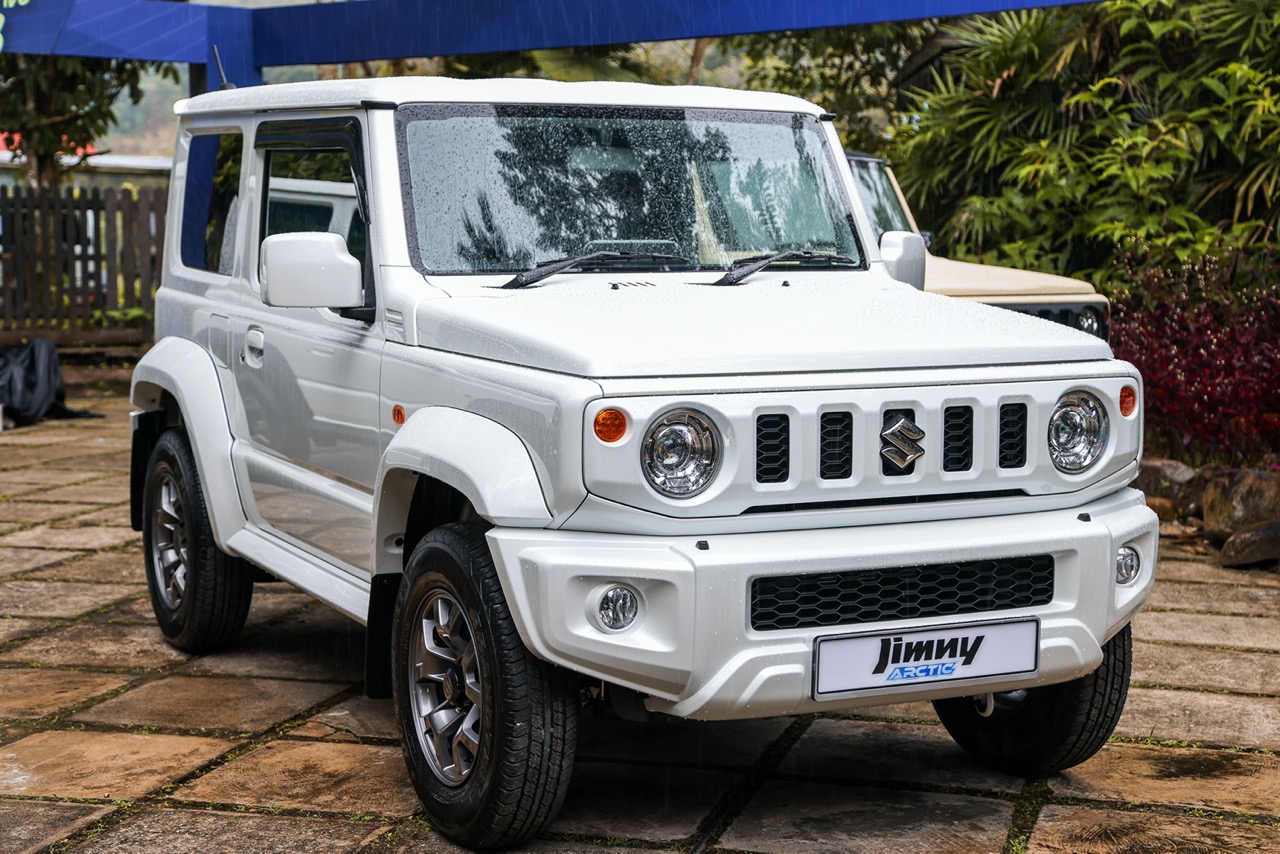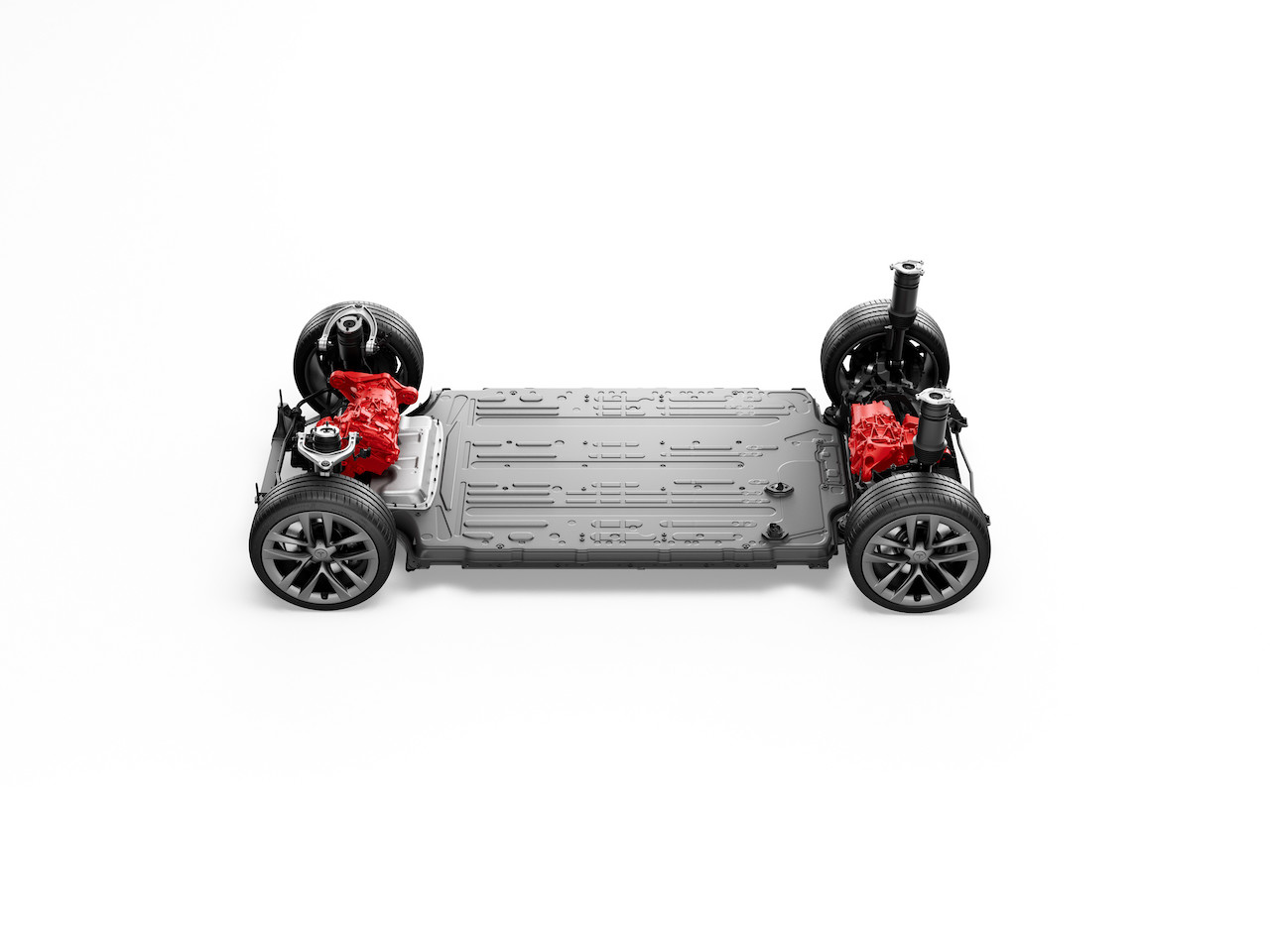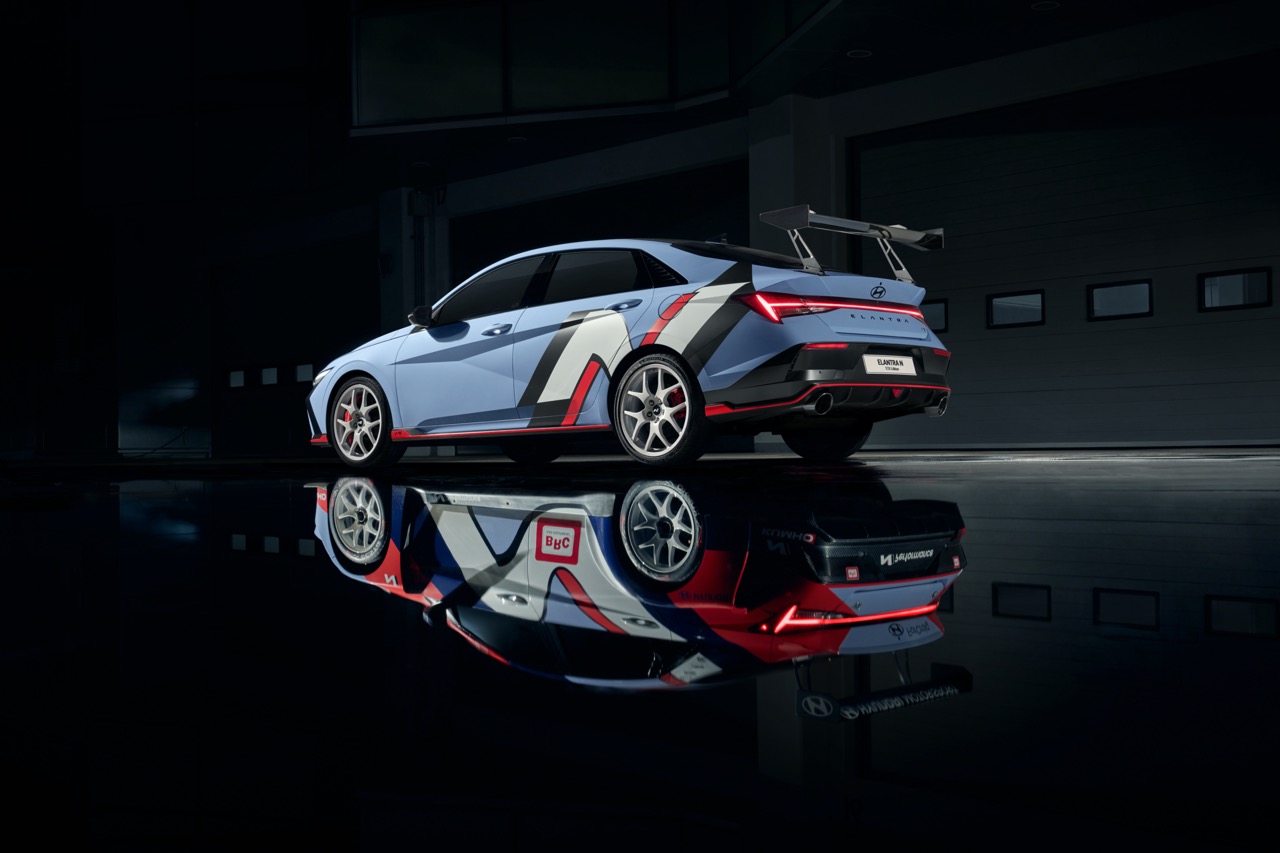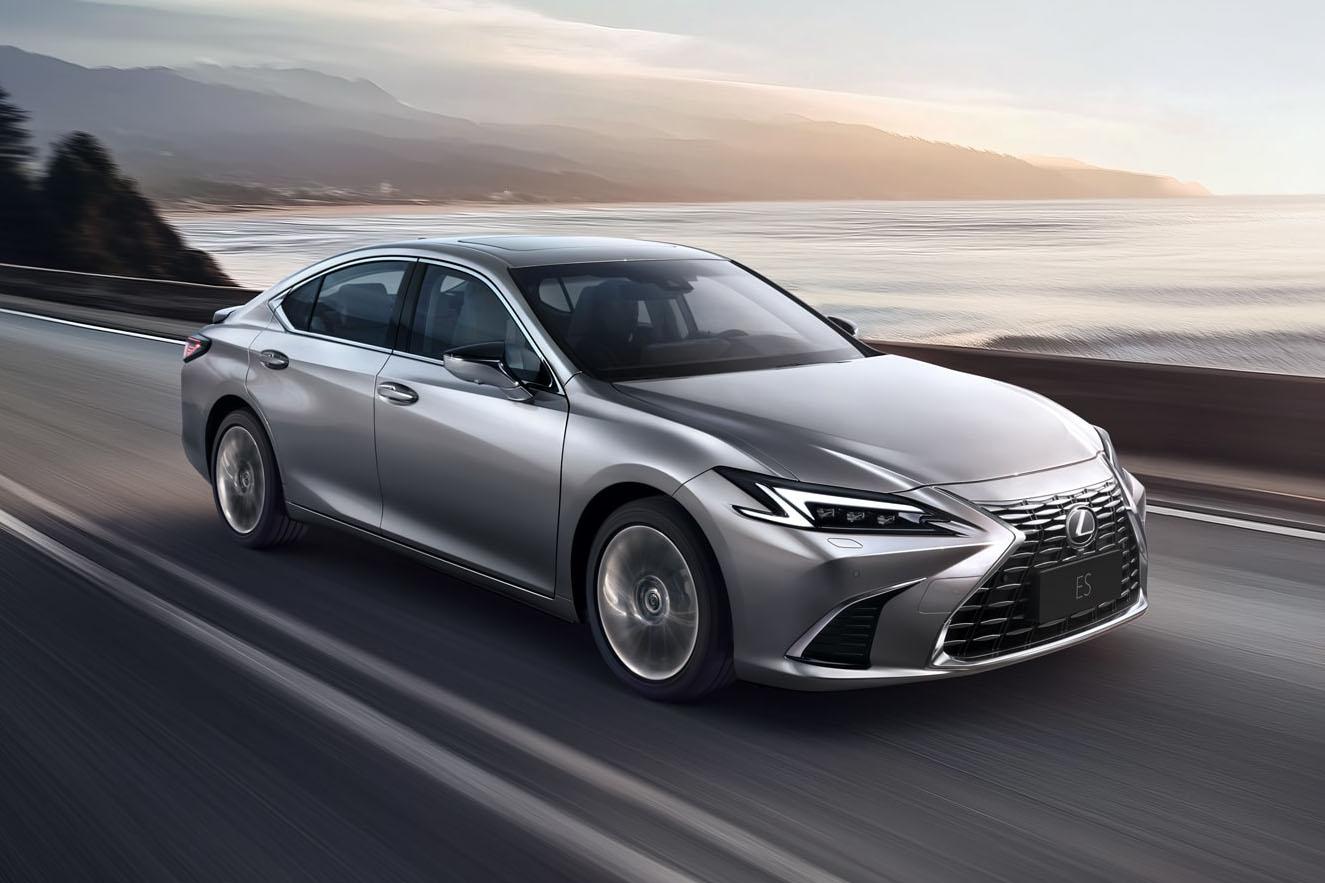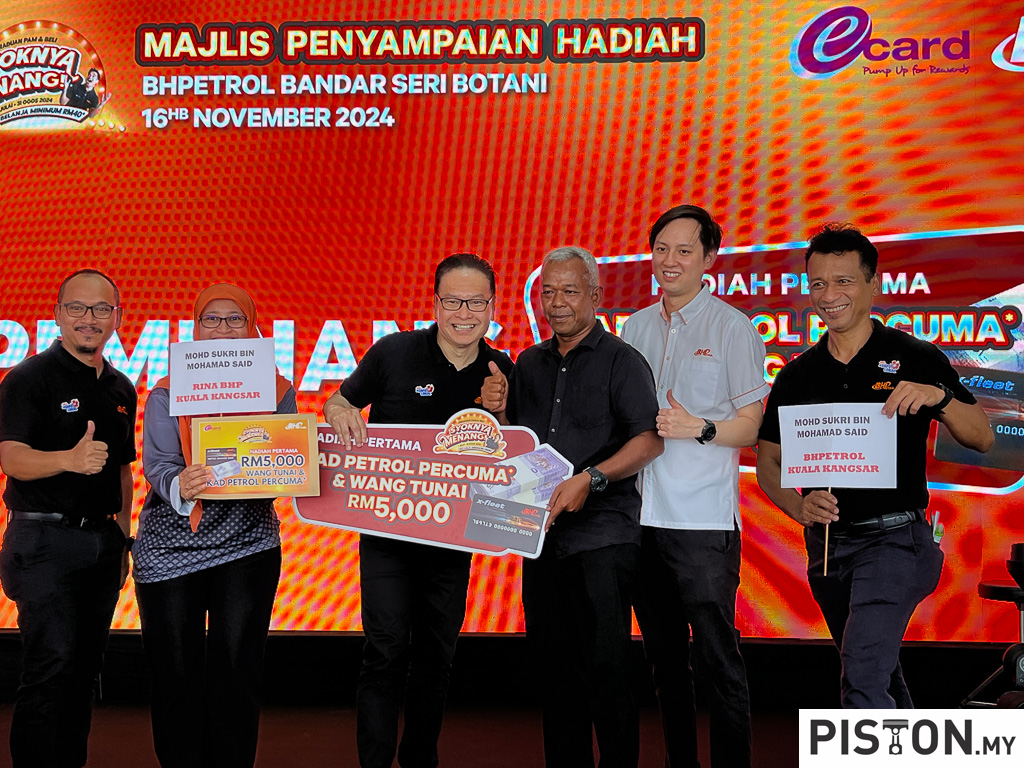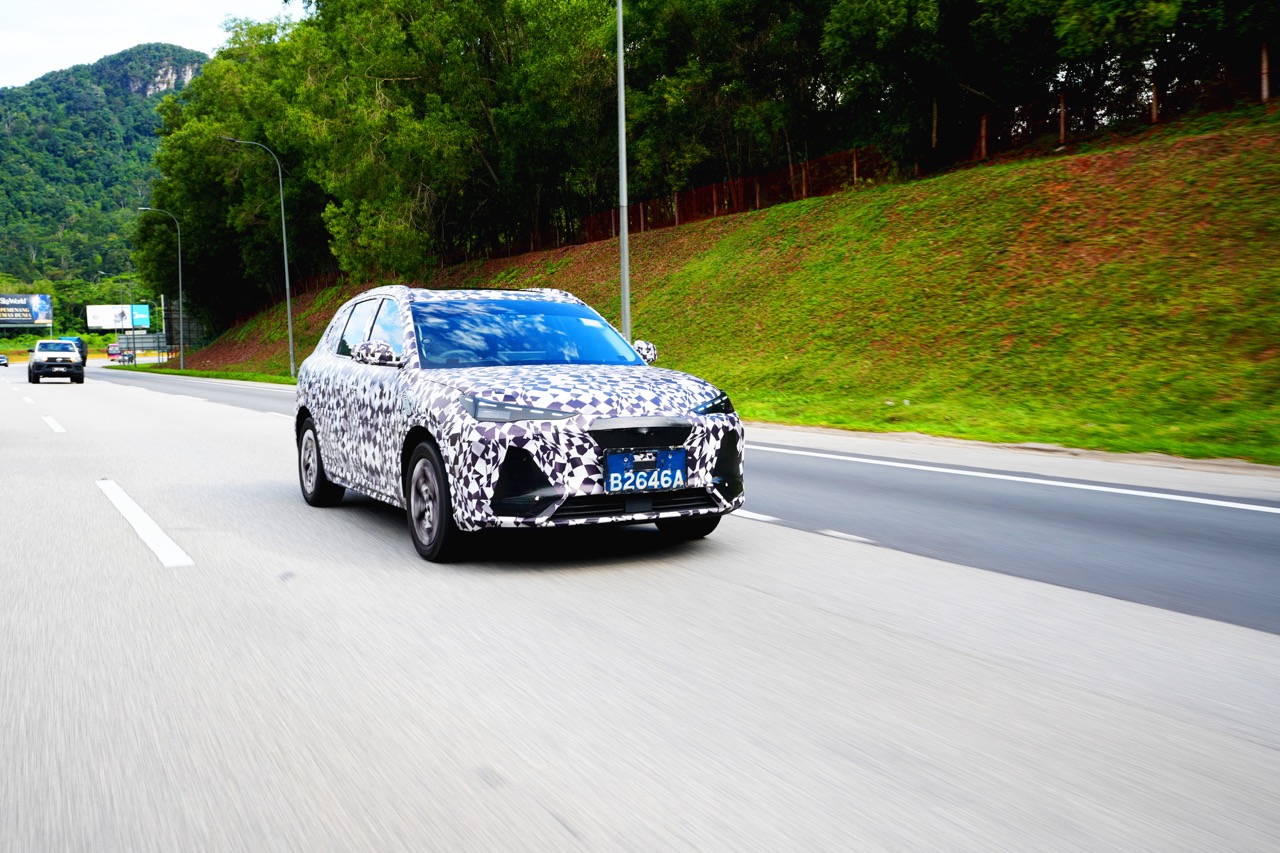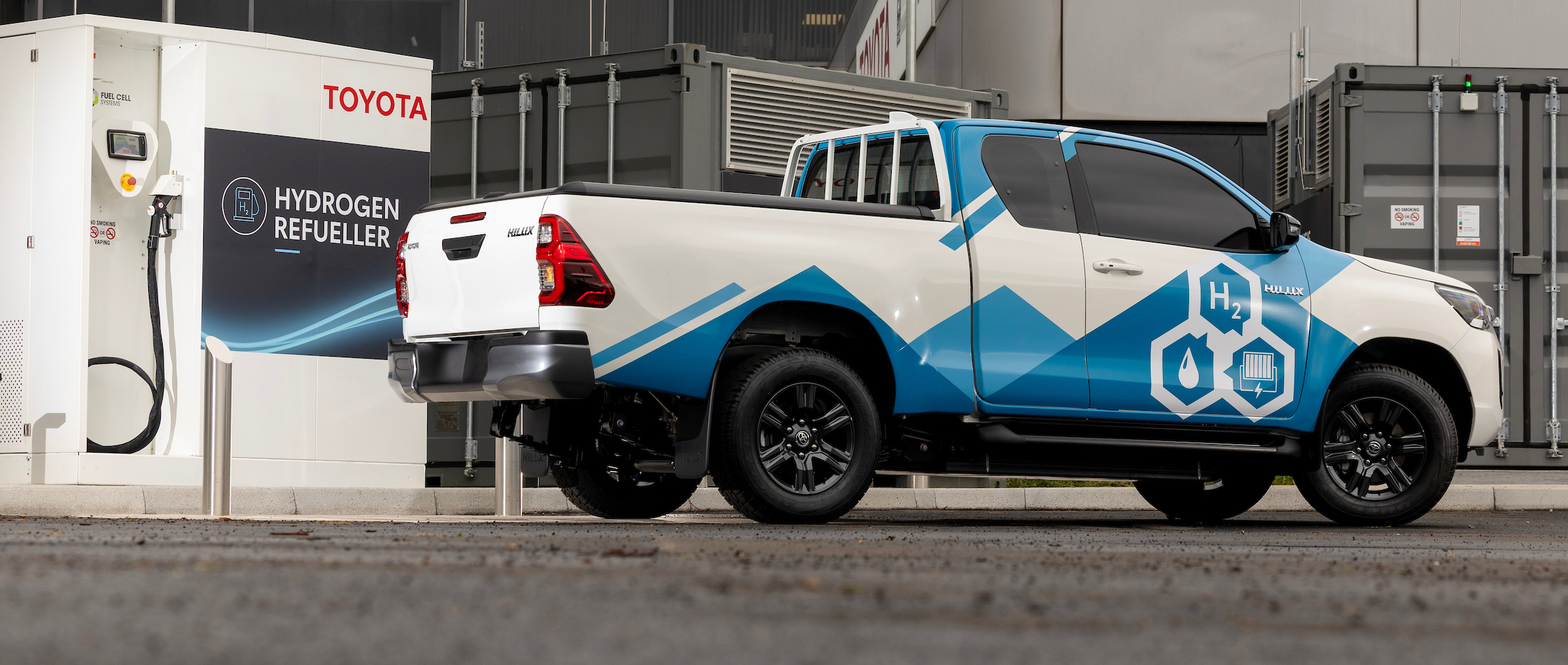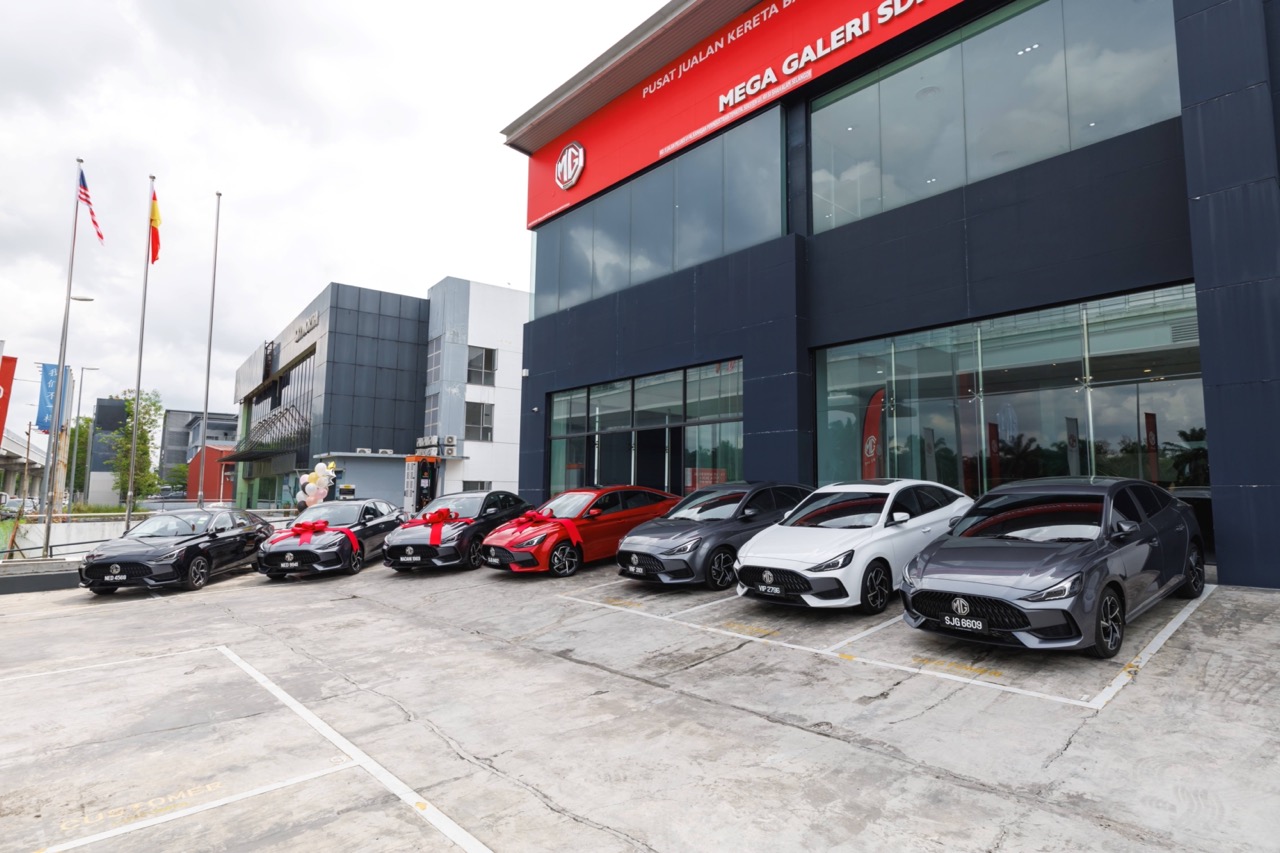Reviewing a tyre is never easy as tyre manufacturers love to claim the impossible yet testing it in real world situations can be tricky. For example, how do you test improved stopping distance on regular roads? You can easily do that in a controlled environment such as on a track where you pit tyres against each other, but in the real world, it is incredibly difficult.
That is why we have shied away from such requests from tyre manufacturers. So, when Goodyear approached us to test out their tyres some months ago, we shelved it, waiting for the opportune moment to do so.
The moment came about recently when the time came to swap the tyres of the family car – a 2021 Mazda CX-5 2.5T.
The Mazda runs on Toyo tyres straight out of the factory. There were no problems with the Toyo’s, so we thought, because we didn’t know anything better. But in hindsight, there were moments where we thought there was too much noise intruding back into the cabin, and there was that occasional twitch when the car hit a puddle of water.
We just didn’t know better, so always thought the noise and twitch was normal.
Then we swapped for the Goodyear Assurance MaxGuard SUV tyres, and no, things didn’t magically change. There was no snap of the finger moment where the noise disappeared, and the car felt planted like a cicak to the wall.
That is the thing about tyre reviews, things don’t magically happen as soon as you swap out the tyres. It takes time to feel the differences of a tyre under different circumstances such as in the rain, braking, cornering, etc.
But there was one thing that was noticeably better – tyre noise.
From Sunway where a designated tyre shop was given the responsibility of swapping our tyres, to our office in Citta Mall, Ara Damansara, there were parts where we needed to pile on speed especially over the federal highway and on the Subang airport stretch. And that is where we noticed the one thing that solved one problem with the Toyos – the cabin noise was down a couple of notches.
According to Goodyear, this quitter ride is achieved by using an angled block design in its tread pattern along with the redesigned ribs and narrower grooves working concurrently to isolate road noise before it is transferred.
This is probably one of the most impressive aspects about the Goodyear Assurance MaxGuard SUV tyres and you can feel it immediately after swapping tyres.
We have since been using the tyres for the past few months, and in all honesty, will never go back to using the Toyo tyres that the car came with.
This writer regularly drives to Ipoh and back to KL and in all conditions, including our torrential monsoon rains.
Malaysian highways are notorious for a number of things including puddles of water where drainage is poor. And then you get pockets of flowing water, and sometimes that can get quite bad.
The Mazda CX5 2.5 Turbo is an all-wheel-drive machine, so it gives you the confidence and grip you need in the rain. But while the car has the tech to manage everything the roads throw at it, its ultimately limited by the tyre.
And during some of those drives in the rain, the Mazda did tend to slip every once in a while, over pockets of water. Nothing too dramatic that will need steering correction, but you feel that sudden twitch of the car. The car has always corrected itself, that is probably one of the benefits of the all-wheel-drive powertrain.
However, that twitch should not be happening. And that could potentially be worse for other cars.
And after a few months of having the tyres on, we have since did the journey to Ipoh a number of times, and have done close to 6,000km on the tyre, which is plenty of distance to be able to tell the difference between the Goodyear’s and the Toyo’s.
Goodyear has incorporated two different technologies into its Assurance MaxGuard tyres. One being ActiveGrip and the other being DuraGuard, which we will talk about later.
The ActiveGrip technology is said to provide 17% better braking in wet conditions and also offers best-in-class wet braking distance. In fact, Goodyear says that the tyre has its wet weather handling characteristics improved by a stonking 25%. All of the improvements are benchmarked against its predecessor, the Goodyear Wrangler TripleMax.
As we found out, this is not just marketing lingo because that twitch and squirm we talked about earlier has faded. And while no one should be driving fast in the wet, but the car feels more confident and planted.
Goodyear achieved this by using a redesigned tread pattern with vertical serrations, and this is said to maximise wet weather grip.
But the best way to increase grip in all conditions is to increase the point of contact where the tyre meets the road. And that is exactly what Goodyear has done.
The contact patch of the tyre is now wider and is more squared than rounded, and while this improves grip, it also evens out tyre wear over time. So, you no longer gets uneven wear which you sometimes see with older tyres.
Then there is the DuraGuard tech, which is designed to keep the tyre lasting as long as possible. In fact, the Goodyear Assurance MaxGuard SUV tyres are said to have a lifespan of between 40,000 to 60,000km. The average driver does about 20,000km a year, so if you are an average driver, then these tyres should last you between two to three years.
The DuraGuard technology works by reducing premature tyre that sometimes happens due to the weight of an SUV. It does did by utilising two-ply construction that uses a reinforced steel belt package that also improves shock resistance. This means that the tyre has a better chance of surviving contact with a menacing pothole.
This also means that the tyre has a better ability to withstand cuts which we sometimes get when accidentally reverse into the roadside curb. And punctures from road debris.
After about 6,000km with the tyre, the wear is still not obvious. Being an all-wheel-drive machine, the wear tends to be greater since all tyres are rotating and transferring power to the road. But this is still not apparent.
Tyres are probably the single most important aspect of a car. You can have all the power and tech, but if you are tyres are not up to mark, that’s akin to skating on ice blindfolded. The Assurance MaxGuard SUV tyres are undoubtedly impressive, and if you appreciate a quiet interior, wet weather grip and durability, then perhaps this is worth considering.
To find out more about the Goodyear Assurance MaxGuard SUV tyres, click here.




